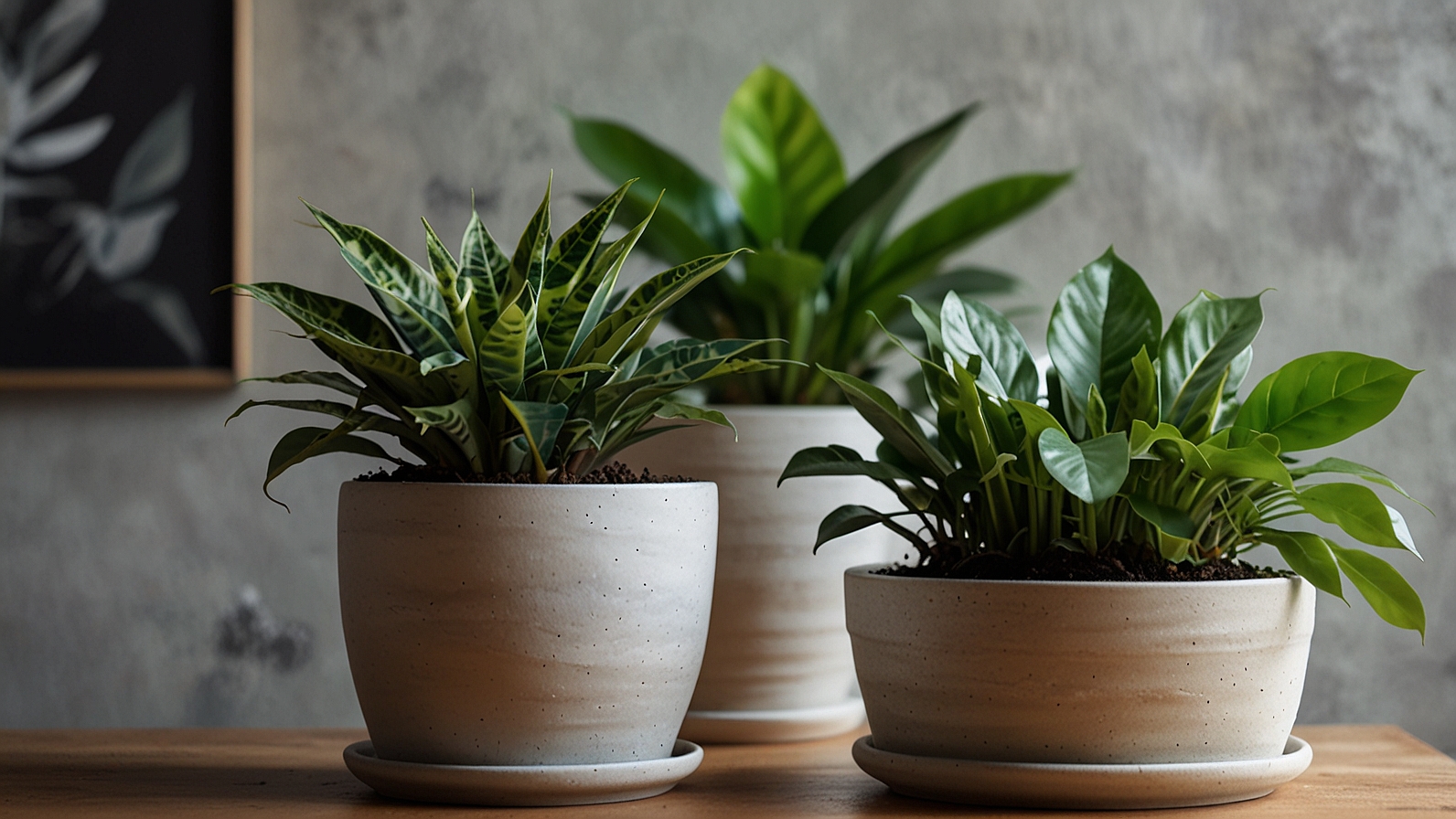In the hustle and bustle of modern life, our homes often serve as sanctuaries of peace and relaxation. Adding indoor plants to your living space can not only enhance the aesthetic appeal but also provide psychological and health benefits. Even if your home has limited natural light, there are plenty of plants that thrive in such conditions and can uplift your mood.
Here’s a guide to low-light-loving plants that bring life to your interiors and a sense of calm to your mind.
Why Indoor Plants Are Good for You
Studies have shown that indoor plants can improve air quality by absorbing toxins and releasing oxygen. Beyond their physical benefits, they have a significant impact on mental well-being:
- Stress Reduction: Interacting with plants can lower cortisol levels, the hormone associated with stress.
- Mood Enhancement: Greenery adds vibrancy to your space, creating a calming atmosphere.
- Improved Focus: Plants can help increase concentration and productivity, making them ideal for home offices.
- Aesthetic Comfort: They add a touch of nature, softening harsh interiors and creating a soothing environment.
Low-Light Indoor Plants to Consider
1. Snake Plant (Sansevieria)
Known as the “Mother-in-Law’s Tongue,” the snake plant is nearly indestructible and thrives in low-light environments. Its upright leaves with vibrant green and yellow stripes add a modern touch to any room.
- Care Tips: Water sparingly; allow the soil to dry out between waterings.
- Mood Boost: Its air-purifying properties can help create a healthier indoor atmosphere, promoting better sleep and overall wellness.
2. Pothos (Epipremnum aureum)
Pothos, also known as Devil’s Ivy, is a trailing plant with heart-shaped leaves. It’s incredibly easy to care for and adapts well to various light conditions, including low light.
- Care Tips: Water when the soil feels dry. It can grow in soil or water.
- Mood Boost: Its cascading vines bring a sense of movement and energy to your space, symbolizing growth and renewal.
3. ZZ Plant (Zamioculcas zamiifolia)
The ZZ plant is a striking option with glossy, dark green leaves that reflect light and brighten up dim spaces. It’s perfect for forgetful plant owners.
- Care Tips: Requires minimal watering—once every two to three weeks is sufficient.
- Mood Boost: Its bold appearance creates a statement piece, adding confidence and vitality to your environment.
4. Peace Lily (Spathiphyllum)
Peace lilies are elegant plants with glossy leaves and white blooms. They thrive in low to moderate light and are excellent for purifying the air.
- Care Tips: Keep the soil moist but not soggy, and mist occasionally to maintain humidity.
- Mood Boost: Their graceful flowers symbolize peace and tranquility, fostering a serene atmosphere.
5. Philodendron
This classic houseplant is known for its heart-shaped leaves and easy maintenance. Philodendrons come in various types, and most thrive in low-light conditions.
- Care Tips: Allow the top inch of soil to dry before watering.
- Mood Boost: The lush greenery brings a sense of freshness and renewal, perfect for rejuvenating your spirits.
6. Cast Iron Plant (Aspidistra elatior)
True to its name, the cast iron plant is tough and resilient. Its long, dark green leaves add a touch of elegance to any room.
- Care Tips: Water occasionally; it’s highly tolerant of neglect.
- Mood Boost: Its robust nature inspires strength and endurance, qualities that resonate in challenging times.
7. Ferns (e.g., Boston Fern)
Ferns, especially the Boston Fern, thrive in low light and high humidity. Their feathery fronds create a soft, lush look.
- Care Tips: Keep the soil consistently moist and mist regularly.
- Mood Boost: Their delicate foliage adds a calming and nurturing vibe to your space.
Tips for Caring for Low-Light Plants
While these plants are low-maintenance, a little attention goes a long way in keeping them healthy:
- Avoid Overwatering: Most low-light plants prefer to dry out between waterings. Check the soil moisture with your finger before adding water.
- Clean the Leaves: Dust can accumulate on leaves, blocking their ability to absorb light. Wipe them gently with a damp cloth.
- Rotate Your Plants: Rotate the pots occasionally to ensure even growth and prevent your plant from leaning toward the light source.
- Provide Occasional Bright Light: Even low-light plants benefit from an occasional boost of indirect sunlight.
- Choose the Right Pot: Use pots with drainage holes to prevent waterlogging, which can lead to root rot.
How Indoor Plants Boost Your Mood
- Connection to Nature: Caring for plants brings a sense of purpose and connects you to nature, even in urban settings.
- Mindfulness Practice: Tending to plants encourages you to slow down and focus on the present moment.
- Aesthetic Appeal: Greenery enhances your home’s ambiance, creating a relaxing and inviting space.
- Sense of Accomplishment: Watching your plants grow and thrive provides a sense of achievement.
Conclusion
Low-light indoor plants are not just decorative accents; they’re companions that contribute to your physical and emotional well-being. Whether you’re a seasoned plant parent or a beginner, these resilient plants offer an opportunity to bring the beauty of nature into your home while enhancing your mood. Start small, nurture your green friends, and watch as they transform your space and your state of mind.





